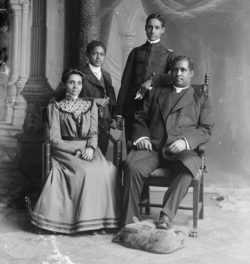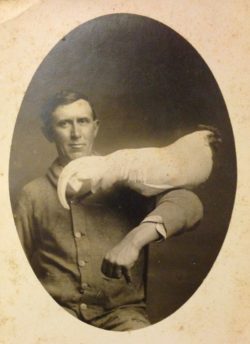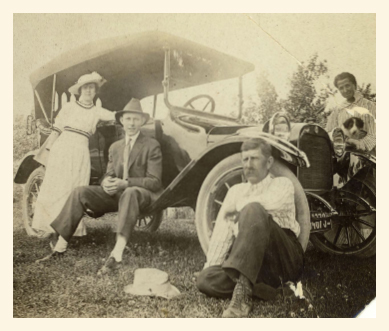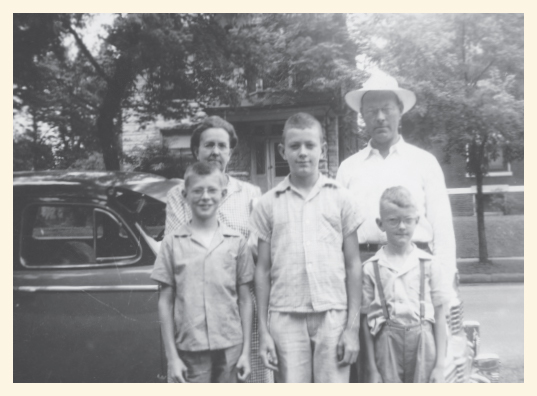By Kurt Rump
Is it worth the effort?
In short, yes. But seriously, how hard can it be?
Let’s take a look at that. But first, we’ll begin by understanding what makes family stories so worthwhile.
 Deep down, you already know. In fact, you probably don’t even have to dig that deep. You can probably just scratch through the surface – like a gardener gently moving some topsoil aside to see if those seeds that she planted a few days ago have yet begun to grow – and recognize the value that family stories yield.
Deep down, you already know. In fact, you probably don’t even have to dig that deep. You can probably just scratch through the surface – like a gardener gently moving some topsoil aside to see if those seeds that she planted a few days ago have yet begun to grow – and recognize the value that family stories yield.
It’s human nature, right? Part of understanding who you are is knowing where you came from. We’re all instinctively curious about our roots. And if you don’t trust your instincts, relax. There is plenty of research to back you up.
I was reminded of this when a friend forwarded a Good Housekeeping article entitled, We’re Losing Generations of Family History Because We Don’t Share Our Stories. In it, Emory University researcher Robyn Fivush, Ph.D., is quoted as saying, “Because our families are among the most important social groups we belong to and identify with, stories about our family tell us who we are in the world, and who we should be. Stories about our parents and grandparents provide models of both good and bad times, as well as models of overcoming challenges and sticking together.”
So, let’s accept that it’s worthwhile to share family stories. You know it. I know it. There’s research to support us.
Now back to the original question: How hard can it be?
In the article I just referenced, the author, Rachael Rifkin, describes a common dilemma when it comes to sharing family stories, “People usually don’t become interested … until they’re in their 50s and 60s when they have more time to reflect on their family identity. The problem is that by that time, their grandparents and parents have often already passed away or are unable to recount their stories.”
The solution, she says, “…is to get people interested in their family histories when they’re still adolescents or young adults when they can still hear directly from relatives.”
She then goes on to dispense some sound, actionable suggestions to initiate intergenerational storytelling. Really wonderful stuff.
Here’s the problem I’m having. Two problems actually.
 One, as good as her advice is for initiating the storytelling, it only works IF you are successful getting the adolescents and young adults interested. That’s a big IF. It is often easier said than done. The stars and planets may not yet have aligned for your intended audience. Even if they align for some, there are likely going to be others who would also benefit from those shared stories somewhere down the road. What about them?
One, as good as her advice is for initiating the storytelling, it only works IF you are successful getting the adolescents and young adults interested. That’s a big IF. It is often easier said than done. The stars and planets may not yet have aligned for your intended audience. Even if they align for some, there are likely going to be others who would also benefit from those shared stories somewhere down the road. What about them?
And two, ‘telling’ the stories is different from ‘capturing’ them. We all know how much fun it can be to sit around the kitchen table and engage in family stories. It’s a social activity and everyone benefits from the interaction. Stories are told, questions are asked, details are probed, differing perspectives are shared. But when we walk away, those stories are oral history. How good will your memory be of stories you heard a year ago? A decade ago?
So, what effort is required to share family stories? The answer varies with your circumstances.

If you are blessed with a willing and eager intergenerational audience that comprises relatives who ALL possess the uncanny ability to recall and recount details of stories long after hearing them, your family is indeed special and your effort to share family stories with current and future generations will be minimal. But people with photographic memories are not common, are they? In fact, they are rare. Realistically, every story shared orally is at risk of being lost.
On the other hand, if you and your family are as normal as the rest of us, you may want to explore some of the solutions out there that are designed to help you capture and preserve your family stories. Of course, you can always devise your own approach and hope that someone in the family can make sense of it later.
As you consider the time and effort involved with different approaches to documenting your family stories, give some thought to what a “sustainable” solution would look like to you.
Would it be something you could print and pass down from one generation to the next? Maybe photo books or scrapbooks? A memoir? Would it be something digital and closed–ended, meaning that once created and curated, it would be a permanent record that was ‘closed’ to updates and additions but always available to peruse?
Would it be something digital and open–ended, meaning that it would always be ‘open’ to updates, additions, questions, and perspectives as it moved from generation to generation? A place to connect stories to old family photos? Something akin to a virtual kitchen table where the whole family can engage and interact?
Regardless of what a sustainable solution would look like to you, we should all heed the advice of the famous Scottish-American industrialist and philanthropist, Andrew Carnegie: “Anything in life worth having is worth working for.”
Yes, there is some effort involved in documenting family stories – capturing and preserving them for current and future generations. But it’s worth it.
And in my experience, it isn’t work at all.
It’s pure joy.




